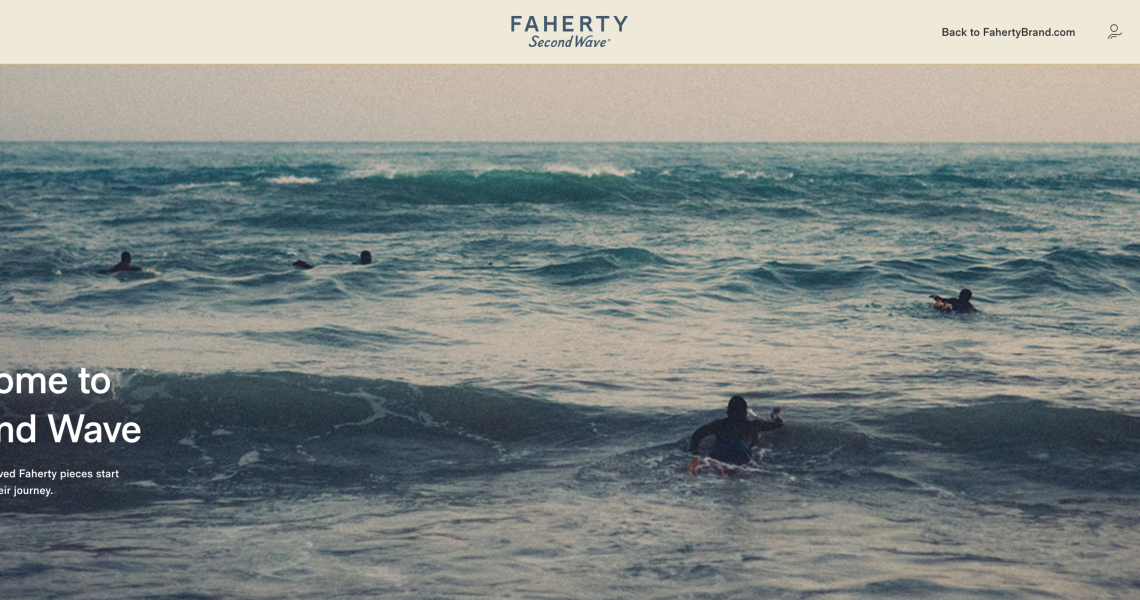The 10-year-old American surf brand Faherty is the latest brand to launch a dedicated resale channel, with Tuesday’s launch of Faherty Second Wave.
Kerry Docherty, co-founder and chief impact officer of Faherty, said resale fits perfectly with the brand’s ethos of creating clothes that are meant to last. The primary goal for the new channel is to keep Faherty’s products out of landfills.
The company spent over a year developing Second Wave, which will be marketed with email blasts, SMS and a social campaign. The inventory will be a combination of peer-to-peer resale, where buyers will get products directly from sellers, alongside products directly listed by Faherty, which are returned or damaged items that have been repaired.
Docherty said she’s comfortable with resale being an experiment that may or may not be immediately profitable.
“I don’t see any conflict between selling secondhand and our new stuff,” she said. “We’re a family business and we don’t have private equity or venture capital breathing down our neck. We believe this is in line with our values. We would love for it to be a revenue stream, of course, but if all it does is prevent Faherty clothes from ending up in a landfill, then that’s a win for us.”
The path from launching a branded resale program to growing it into a source of significant revenue is not always clear. Emily Gittins, co-founder and CEO of Archive, said she usually recommends a test phase of about three months for brands that are new to the resale game.
“Our goal is for resale to be a significant source of revenue for brands in a year or so,” Gittins said. “Of course, the market is so new that it’s hard to say what ‘significant’ means to each brand.”
Docherty sees resale as a potential solution to the problem of overproduction. About 50% of Faherty’s sales come from core styles as opposed to seasonal or one-off products. The potential for resale is that, one day, Faherty may be able to produce fewer core styles to satisfy demand, Docherty said.
“It would be incredible if people only bought on the resale market,” she said. “I basically only buy Faherty or secondhand clothes these days myself. There are more than enough clothes out there than the world needs right now. I do believe we are making our clothes in a thoughtful and sustainable way. And maybe, in a few years, we’ll be able to just make less of everything.”




